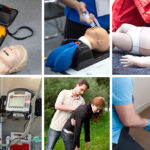Healthcare providers play a crucial role in saving lives during an emergency. These include doctors, nurses, and first responders. They are often trained to perform cardiopulmonary resuscitation (CPR) to help someone who has stopped breathing or whose heart has stopped beating.
However, even trained healthcare providers can make mistakes in CPR. To avoid such mistakes, register with a reputed and accredited institute like the American CPR Care Association. It’s important to understand these common mistakes. We can then prevent them from happening and increase the chances of saving a life.
7 reasons why you should stop giving CPR
Here are some reasons why you must stop giving CPR to a person:
- The person starts breathing on their own.
- You are too tired to continue.
- The person wakes up or becomes responsive.
- Medical help arrives.
- The person has a do-not-resuscitate (DNR) order.
- A doctor declares the patient dead.
- The person has been without a heartbeat for too long and there is no chance of survival.
Impact of CPR training in one’s life
The impact of CPR training in one’s life can is as follows:
- Life Saving Skills: CPR training teaches you how to perform CPR correctly and effectively. It comes in handy in an emergency, which could save someone’s life.
- Confidence Boost: Knowing how to perform CPR can give a person more confidence in emergency situations and make them feel prepared to act.
- Job Requirements: Some jobs, such as lifeguards, first responders, and healthcare providers, may require CPR certification as part of their job duties.
- Peace of Mind: Having CPR training can give a person peace of mind knowing that they have the skills to help someone in need and make a positive impact in an emergency.
- Good Citizenship: By taking training in CPR, you become a responsible and informed member of your community. You can help those in need and improve public health.
What happens when CPR goes wrong?
If you perform Cardiopulmonary resuscitation (CPR) incorrectly, it can cause harm to the patient. It could even make their condition worse. Incorrect CPR techniques could break ribs, causing internal injuries. You could push air into the stomach instead of the lungs. It is important to receive proper training and follow correct CPR guidelines. By following the right process you reduce the risk of harm. Right CPR maximizes the chance of a successful outcome.
Common mistakes healthcare providers do when performing CPR
Healthcare providers can make the following common mistakes in CPR:
1. Not pushing hard enough: It is important to apply enough pressure during chest compressions. It helps with blood circulation and keeps oxygen flowing to the brain.
2. Not pushing fast enough: Give chest compressions at a rate of 100 to 120 per minute. At this rate your compressions match the rhythm of the classic song “Stayin’ Alive”.
3. Not giving enough breaths: A ratio of chest compressions to breaths should remain constant. Not giving enough breaths can reduce the amount of oxygen reaching the person’s lungs.
4. Not checking the airway: Before giving breaths, it is important to make sure the person’s airway is open. A clear airway ensures the breaths reach their lungs.
5. Stopping CPR too soon: It is important to continue performing CPR until emergency medical services arrive. You can also stop when the patient shows signs of regaining consciousness. They may gasp for breath when breathing on their own.
6. Not using proper technique: Proper hand placement and technique are important for effective CPR. Improper technique can reduce the effectiveness of CPR. It can cause harm to the person receiving it.
What’s the right solution to avoid these CPR mistakes?
The right solution to avoid these CPR mistakes is:
- Get Proper Training: Attend a CPR training class taught by a certified instructor. They can teach the proper techniques and show how to perform CPR correctly.
- Practice: Regular practice will help you remember the proper techniques. It builds muscle memory, so that you can perform CPR correctly in an emergency.
- Follow guidelines: Make sure to follow the latest CPR guidelines. The American Heart Association updates these regularly.
- Use an AED: An automated external defibrillator (AED) is a machine that can help restart a person’s heart. If one is available, use it as directed.
- Stay calm: In an emergency, it’s important to stay calm and focused, so that you can perform CPR correctly and effectively.
- Call for Help: Call for emergency medical services as soon as possible. You should continue performing CPR until they arrive or the person starts to show signs of regaining consciousness.
Conclusion
To avoid these mistakes in CPR, healthcare providers should attend regular CPR training classes from the American CPR Care Association. They should regularly practice, follow the latest CPR guidelines, and stay calm. By following these steps, healthcare providers can improve their CPR skills. They can increase the chances of saving a life in an emergency.







